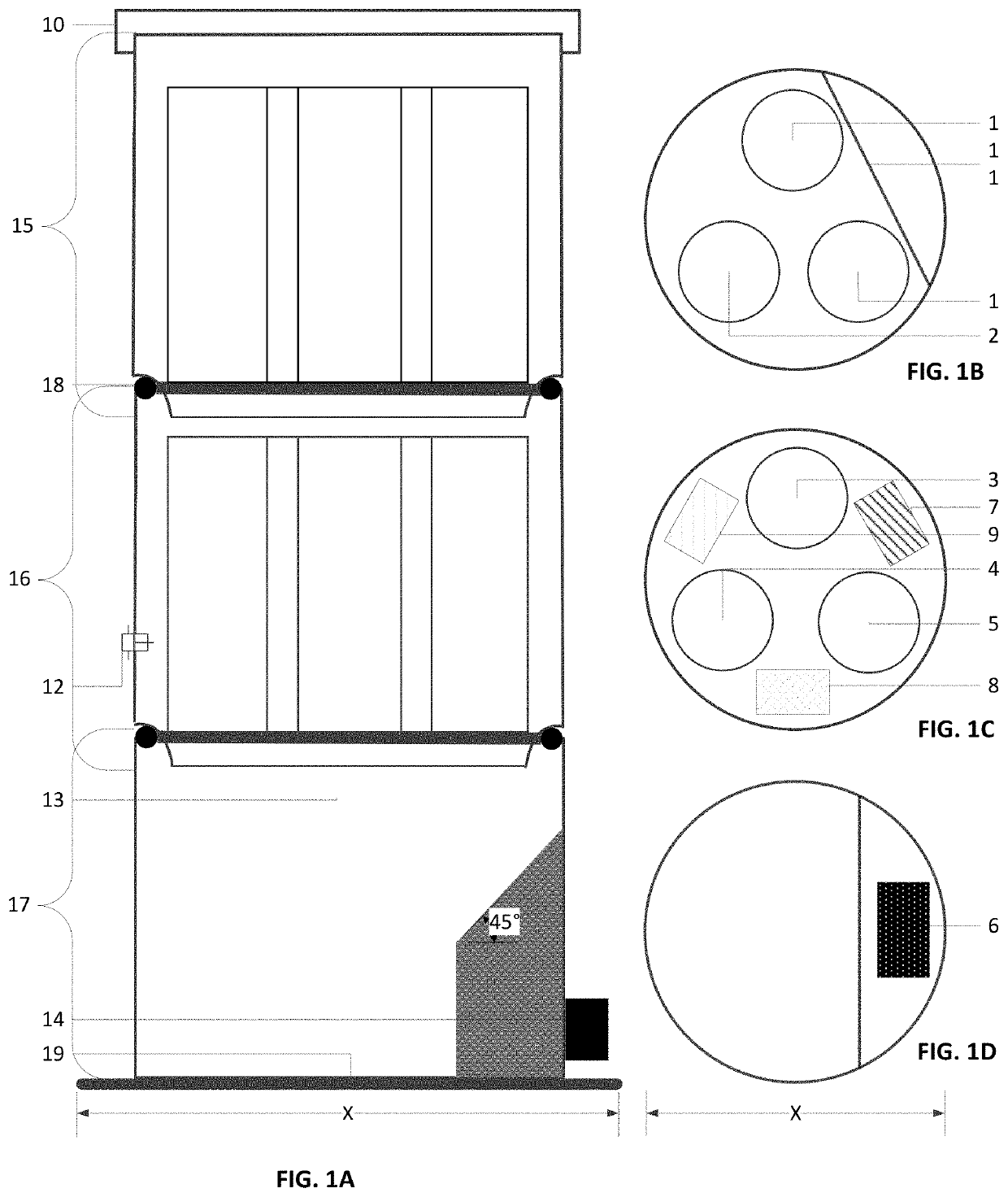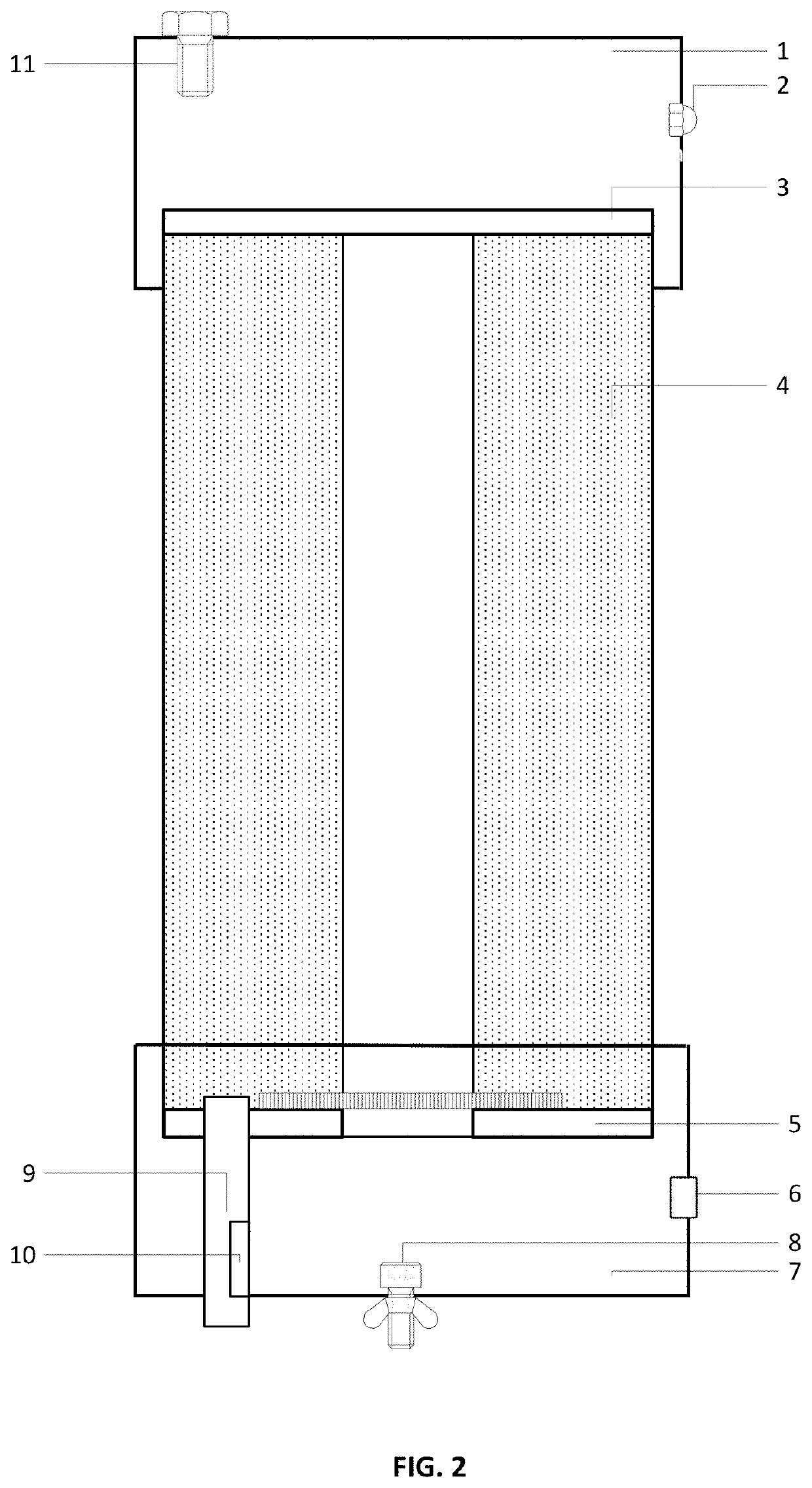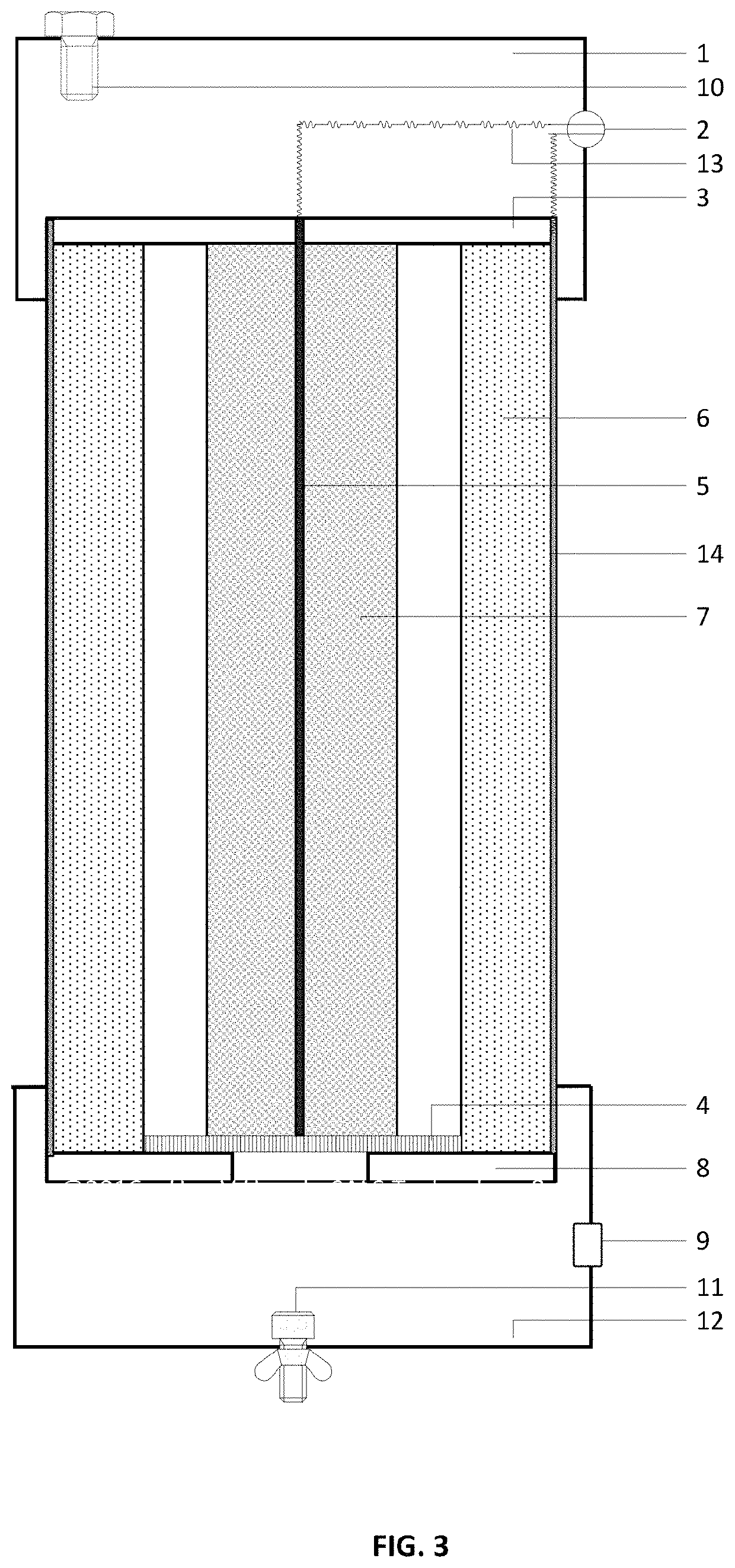Adaptive catalytic technology water treatment system
a technology of catalytic technology and water treatment system, which is applied in the direction of water/sewage multi-stage treatment, water/sewage treatment by oxidation, and treatment involving filtration, etc. it can solve the problems of media blindness from the ss and biofilm formation, the inability of the technology to treat naturally dissolved organic carbons, and the inability to treat organic by-products. , to achieve the effect of reducing or eliminating organic compound contaminants, improving the efficiency of commercial treatmen
- Summary
- Abstract
- Description
- Claims
- Application Information
AI Technical Summary
Benefits of technology
Problems solved by technology
Method used
Image
Examples
Embodiment Construction
[0045]Before describing the disclosed embodiments of this technology in detail, it is to be understood that the technology is not limited in its application to the details of the particular arrangement shown here since the technology described is capable of other embodiments. Also, the terminology used herein is for the purpose of description and not of limitation.
[0046]In the following description of this ACT water treatment invention, specific details are set forth in order to provide a thorough understanding of this ACT water treatment invention. On the one hand, it is understood that those who are skilled in the art may practice this ACT water treatment invention without these specific details. On the other hand, well-known methods, procedures, and components have not been described in detail so as not to obscure this ACT water treatment invention.
[0047]
TABLE 1GRAVITY FLOW WATER TREATMENTNONAME01Suspended Solid Removal (SS) Module 102Hardness Reduction Module 203Total Organic Ca...
PUM
| Property | Measurement | Unit |
|---|---|---|
| wavelength | aaaaa | aaaaa |
| wavelength | aaaaa | aaaaa |
| Hardness | aaaaa | aaaaa |
Abstract
Description
Claims
Application Information
 Login to View More
Login to View More - R&D
- Intellectual Property
- Life Sciences
- Materials
- Tech Scout
- Unparalleled Data Quality
- Higher Quality Content
- 60% Fewer Hallucinations
Browse by: Latest US Patents, China's latest patents, Technical Efficacy Thesaurus, Application Domain, Technology Topic, Popular Technical Reports.
© 2025 PatSnap. All rights reserved.Legal|Privacy policy|Modern Slavery Act Transparency Statement|Sitemap|About US| Contact US: help@patsnap.com



